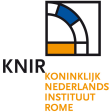Summary
- This field survey is carried out in the locality of Masseria Mea and is part of the Brindisino project (Burgers 1998) and the Salento Isthmus project (Burgers 2009; Attema et al. 2010) conducted by the Amsterdam Institute of the Vrije Universiteit of Amsterdam (AIVU). The primary goal of these projects is to elucidate the development of settlement patterns and urbanization in the context of the integration of the native society into the Graeco-Roman world. The study of the relationship between settlement patterns in the countryside and spatial evolution of the Masseria Mea hamlet is pivotal in this survey.
Project Dates
- 1992 - 1993
- 1988
Periods
- No period data has been added yet
- 1800 BC
- 1000 BC
- 600 AD
- The fields around Masseria Mea were extensively surveyed in 1988 and 1992. In 1993 an intensive survey was carried out: the total area intensively surveyed measures 2 sq. km. The intensive survey first covered an area outside the site core of Masseria Mea at ca. 500 m distance from it. The artefact density here was such that the team decided not to use the square method. The survey did not document a continuous and gradual increase in artefact density as the site core was approached in fact the artefact density at no point exceeded the 15 items per sq. m. The main artefactual concentrations proved to be located on the fairly eroded soil in the centre of the research area, and their average extent was 2500 sq. m. The distance between these concentrations varies between 40 and 200 m and they are located over a total area of 6 ha. Walking side by side, surveyors make constant estimates of the quantity of artefacts. In the field 3-4 surveyors walked side by side, counting the artefacts and assessing changes in density. Artefact estimates are recorded by the team leader every time density changes (at interval of 5 to 10 artefacts per square meter) on a 1:500 map. The present day agricultural lots are taken as the basic research units (these units are generally small and bordered by stone fences). The influence of post-depositional processes on the transformation of the archaeological record has been carefully taken into account; it is especially evaluated the effect of ploughing, modern agricultural and building practices on the displacement of the material debris.
Other Comments
- Director: Prof. dr. G-.J. Burgers (Vrij Universiteit Amsterdam) ................................................................................................................................ This record has been produced by the Fasti Online Survey team within the framework of the KNIR student internship 2020 'Digital Field Survey Archaeology'.
- Assess and trace changes in settlement patterns, land use and town-countryside relations in the territory around the site of Masseria Mea from the Bronze age to the later Roman phases, and put this into the larger regional context of the Salento Isthmus.
- Dutch Foundation for History, Archaeology and Art History Netherlands Organisation for Scientific Research; Royal Netherlands Institute in Rome Vrije Universiteit of Amsterdam Ministero dei Beni e delle Attività Culturali
Director
-
Director
- G.-j. L.m. Burgers




![Edit [ed]](/survey/skins/fastisur/images/plusminus/edit.png)
![View [view]](/survey/skins/fastisur/images/plusminus/view.png)